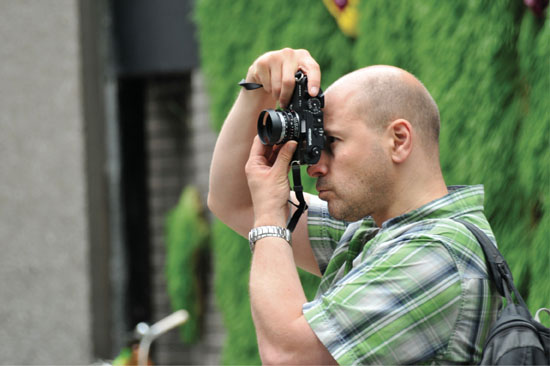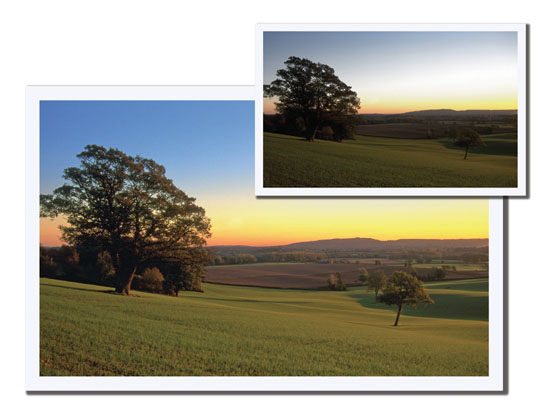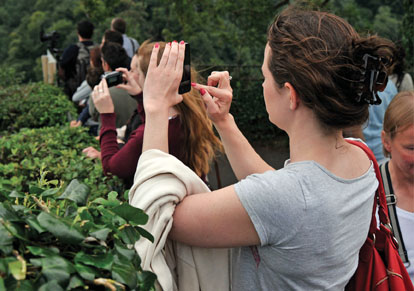Introduction
Were going on a mission to banish mediocrity and to shoot photos of which we can be proud and others envious. Is this a tall order? Not at all. In fact, dont think of it as a mission so much as an adventure into the art, the science and particularly the fun of photography.
Today, cameras are ubiquitous. Wherever people gather you can be sure a fair number of them will have a camera or camera phone raised, recording anything and everything around them. Recall for a moment the summer of 2012, when exciting, emotional and iconic images of the London Olympics flashed around the world across all kinds of media platforms.
What made these images unique and different from those that press photographers have gathered at events for a century or more is that most came from amateur or casual photographers. They were grabbed shots, photos taken on a purely opportunist basis. Now that just about everyone has the chance to record an image whenever and wherever, fantastic photo opportunities are rarely missed.
Often, though, little thought goes into shooting photos; the term point and shoot has become particularly apt. For many of those taking photos, ultimate quality is not the most important factor. Instead, as well as the photos they take serving to provide a record, like favourite music tracks the purpose is also to trigger happy memories.
However sometimes we will want something more photos rather than snapshots; thats where this book comes in. Here well look at ways often simple ones to create great photos that will be more emotive and meaningful to us. This is not a photo manual, so were not going to spend a lot of time defining rules and formalities; rather its about discovering that the fun of photography and developing the skills to shoot compelling photos need not be mutually exclusive.
Well cut, too, through the mystique in photography. Photographers can become presumptuous and dare I say it even pretentious about images. They can demand that every shot they take and every photo they critique must be meaningful. Not only must these images be technically correct in terms of exposure, focus and composition, they must also say something to us they must have purpose.
This is a laudable attitude and is certainly one with merit, but for many of us it can be restricting. Anguishing over taking a photo can mean we lose the moment and the spontaneity. Sometimes we just want to take photographs for fun, or for our own enjoyment. These photos will not win any competition or gain plaudits from our peers, but then they are not intended to. Yet they will become treasured, and theres no reason why they should not be good photos.


Cameras everywhere: Youll find people shooting photos everywhere and with kit that ranges from a simple camera phone through to that normally the preserve of professionals. On its own, great kit does not guarantee great photos; theres a degree of skill or old-fashioned nous needed, too.

Before and after: Its surprising how a little forethought can transform a mediocre shot, here the smaller shot in each pair, into something more compelling.
So, then, what is it that makes the photos you shoot good rather than great? Of course, it can be any one or more of a number of things. It could be that your camera has predicted the optimum settings to use to the best of its ability, but those settings are not entirely appropriate. In this book well investigate those situations where you are safe to leave the camera to its own devices and those when you need to intervene. It may be that youve positioned your subjects well in the frame of the viewfinder, but you could have done so to better effect. Or it may simply be that youve not exploited the colour, the light or the subjects in your scene.
Whatever the reason, well look at the cause and how you can do better. Well be taking a holistic approach, using in camera and image manipulation software as appropriate. What we wont be doing though, is using image manipulation software whether on a computer, tablet or in your camera as an excuse for accepting mediocre shots. Image manipulation software can make a good photo great, but should not replace sloppy technique.
I want to add a note about the photos used in this book. Often books that explore photographic technique use photos shot on the most professional cameras and post-processed to deliver perfection. This can be good as it provides inspiration, but it can also be a little intimidating, as the images appear so good that its hard to emulate or equal them. So, for this title all the photos used in the examples have been shot using either amateur or enthusiast cameras nothing exotic, nothing out of the ordinary. In fact, they are images that, once youve gleaned the essentials from this book, you could well be shooting yourself!
Shooting photos is fun and can be compelling. Never lose sight of that. Lets just make sure our photos can be something to be justifiably proud of too!
Camera Phones
Camera phones have played a dramatic role in increasing the number of photos shot daily around the world. However, do they stack up well against conventional cameras? In some respects they do, in others less so. In yet more situations they can do things conventional cameras cant. So in this book weve highlighted some situations where your camera phone might give you a bit of an advantage and the occasions where you might need to rethink your approach. One thing is clear though, dont knock camera phones; they will open the door to opportunities other cameras wont.

Camera phones: They may be limited in their scope and control, but dont dismiss camera phones. Situations will arise when a camera phone is the only option where conventional cameras are banned, for example. And in the right hands you can still get some great shots.
Chapter 1: Turning the Good into Great
Its surprising how ideas and inspiration for books sometimes begin. For this one, it was being asked to look at a collection of photos. This might seem a perfectly innocuous activity, but while doing so you can find yourself in a somewhat difficult position. Asked to comment on a collection of obviously prized images, it is hard to be truthful. Viewing with the critical eye of a photographer, I tend to view such collections in a rather clinical, technical sense, noticing the poor composition, wincing at tiny subjects almost beyond recognition, and being drawn to the lack of critical focus in many of the shots.
Of course I would never unless the photographer compelled me to do so openly criticize or point out shortcomings. To many photographers shooting is about recording events and saving memories: a childs first steps, the last picture together of two loved but departed family members. In these circumstances many people care less about what the shots look like, rather that they just want a permanent record of the event. However, when people are obviously keen to capture these images, wouldnt it be great if they could record their best memories with truly excellent photos instead of the merely good?














